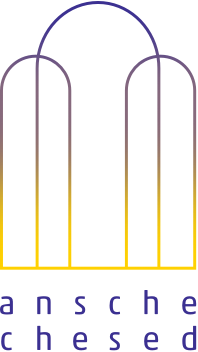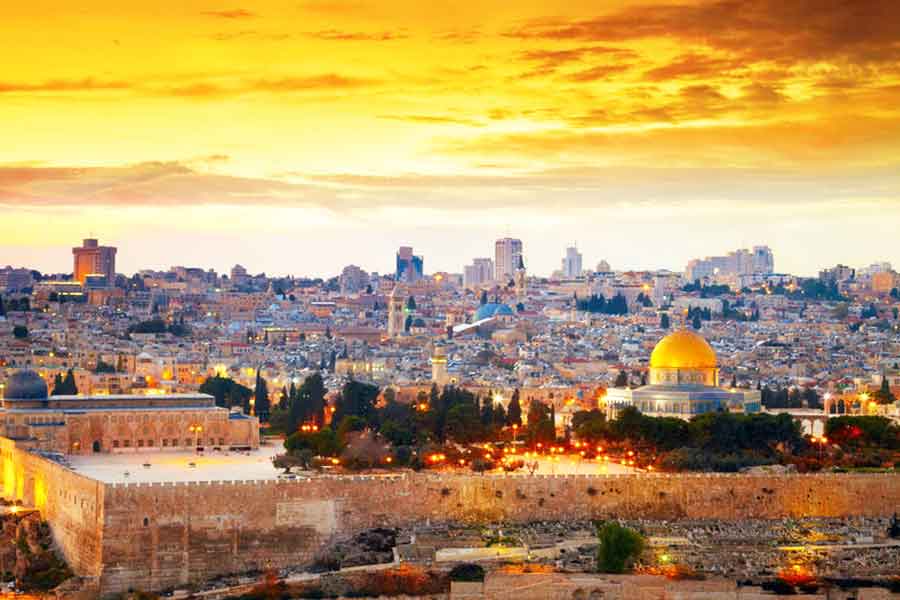The Talmud refers to the Amidah as the Shemonah Esreh, or “Eighteen” Blessings. That name works because the prayer has, of course, 19 blessings. What?!
My post two weeks ago related the Talmud’s account of Samuel the Humble’s reluctant composition of a curse against heretics. People commonly interpret that story to mean Birkat HaMinim was the extra paragraph. But this is probably incorrect.
The likeliest explanation is that the 14th blessing split into two. Even in Mishnaic times [cf Tosefta Berakhot 3.25] there were diverse traditions about whether to group together or separate the blessing for the rebuilt Jerusalem with that for the restored Davidic rule. Diversity remained into the early middle ages: Babylonians broke them into two; Palestinians grouped them into one. The Babylonians won out, and today we recite Boneh Yerushalayim/Rebuilds Jerusalem as one paragraph, and Matzmiah Keren Yeshua/ Salvation Flourishes as another.
But the Palestinian practice had its supporters, especially among medieval mystics. I, myself, davven their alternative version for its theological and poetic power.
The ancient Palestinian Amidah – with only 18 paragraphs and no Tzemah David – concluded this blessing with: ברוך אתה ה’ א’להי דוד ובונה ירושלים/Barukh Atah Adonay Elohei David u’voneh Yerushalayim, “Blessed are You, God of David, who rebuilds Jerusalem [cf. Yerushalmi Berakhot 4.5, 8c].” Naturally, the Babylonian text says only Boneh Yerushalayim.
But the earliest Kabbalists, from the 12th and 13th centuries in southern France and northern Spain, maintained this remnant of the Land of Israel liturgy. Yes, they broke the two themes into distinct blessings, as had become standard by their times. But the leading mystical sage of the era, Rabbi Isaac the Blind maintained the earlier signature blessing. [To read more on this theme, see Zohar 1.248b, R. Bachyah to Genesis 32.10 and additional sources in Yaakov Katz, Halakhah and Kabbalah, 18-19].
I adopt this phrasing for my own davvening, although the halakhic tradition is otherwise, because of its mystical meaning. Davveners know that the Amidah begins by invoking the “God of Abraham, God of Isaac and God of Jacob.” The Babylonian Talmud [Sanhedrin 107a] records a legend in which King David was irked that the prayer did not include him in that noble class; that text explains that David was excluded because he failed the moral test in his adultery with Batsheva.
That’s a good enough explanation, I suppose, but unsatisfying to the mystics. Kabbalists do not read biblical figures primarily as real people who did this or that deed in life or characters who acted thus and so within a story. Rather, they are symbols of aspects of God’s personhood and of major themes of the human psyche. When Kabbalists refer to Abraham, they are not talking particularly about the man in the stories about the rival sons and the vulnerable wife, but about the theme of Hesed, or infinite divine love. And when they talk about David, they do not primarily refer to the guy who stole Uriah’s wife or plunked Goliath in the head. In mystical terms, David refers to the divine potency of Malkhut, the feminine Shekhinah, and most importantly that aspect of the divine immanent in the world. There may be aspects of God beyond, beyond, totally transcendent. But to mystics, David represents the opposite: divinity within the world. God’s immanent Malkhut/rulership is, indeed, majestic, but like the Jewish people, this vulnerable dominion can suffer exile and defeat. True divine majesty is attained when – and only when – it overcomes exile to be manifest in this world as it is.
Ancient Midrash [Bereshit Rabbah 47.6] contains the lovely idea that “the ancestors are the real divine chariot.” That is, God’s throne rides in the world, not so much on angels or in a temple, but upon the excellent humans who live out the covenant.
But Abraham, Isaac and Jacob can constitute only three wheels of a very unstable chariot. In the mystical system, those three ancestors – and the divine Sefirot (potencies) of Hesed, Gevurah and Tiferet they represent – are lofty symbols indeed. But all their transcendence remains incomplete without the immanence represented by David/Malkhut/Shekhinah. It is mystically inadequate for God to rule up in a perfect heaven. Divine Malkhut/majesty must become realized within this world.
Applying this to the prayer, by beginning with only Abraham, Isaac and Jacob, the Amidah is, in some sense, defective, like the world itself, and in need of repair or rebalancing. To ride, the divine chariot needs a fourth wheel, and the Amidah must invoke the “God of David.”
This is my Kavvanah when I davven this blessing. I love and celebrate the modern, rebuilt Jerusalem, but strive rigorously not to let its beauty blind me to its still-broken aspects. Jerusalem is still an unrealized promise, symbolizing the still unredeemed world. And that deserves a place in my prayer.
Merciful God, come home to Your city. Live in its stones, on its streets, as You swore. Build it soon, complete and eternal. Blessed are You, immanent God of David, rebuilder of Jerusalem.





